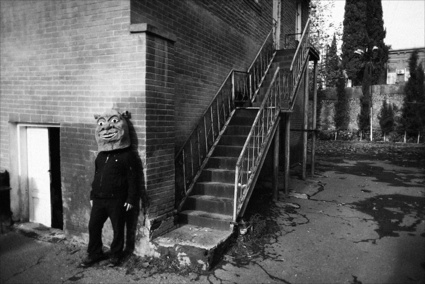 Ilkin Huseynov, Puppet-show, Ganja, Azerbaijan, 2011. From the series Hometown
Ilkin Huseynov, Puppet-show, Ganja, Azerbaijan, 2011. From the series Hometown
For some reason, London’s festival of photography is probably not getting all the attention it deserves. Hence this first hasty story to try and convince you to flock in droves to some of its exhibitions before they close. If i had to recommend just one venue it would be the Fitzrovia Community Centre. All the artists exhibited in the show are new to me and most of their work is of the ‘documentary and heavy in urgent-social-issues’ genre, just my kind of photo show!
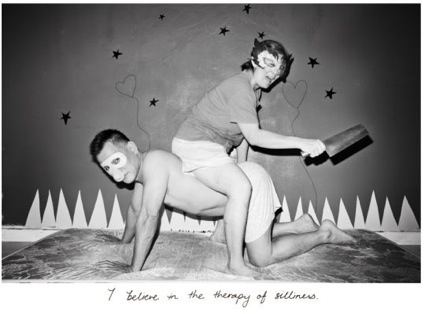 Sean Lee, Homework
Sean Lee, Homework
The community center hosts 2 exhibitions. One presents the winners and finalists of the London Festival of Photography Prize. Their photo-essays or multimedia photo-films reflect the festival’s theme: Inside Out: Reflections on the Public and the Private. The second show, Behind Closed Doors, is about the maids and slaves hired or brutalized to bring order in ordinary households.
My post mix and matches both exhibitions. Just because i can and also because i actually didn’t perceive a separation between both shows during my visit.
Quick march through:
Hector Mediavilla talked to the Elevator Operators of a residential complex in Mexico City. The eleven buildings contain a total 1,100 apartments and were designed in 1947 following the principles of Le Corbousier: “In order to fully develop in a place, the human being needs access to three basic sources of well-being: light, space and green areas”. Contradicting these principles, an elevator operator ‘lives’ a third of their day inside a metal box – just 2 metres square – which, in addition, they have to share with the lift users.
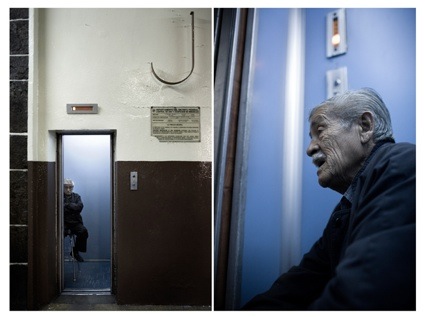 Manuel (71) has been doing the night shift in Building J for 10 years now. He likes the contact with the people and the relations he has built up
Manuel (71) has been doing the night shift in Building J for 10 years now. He likes the contact with the people and the relations he has built up
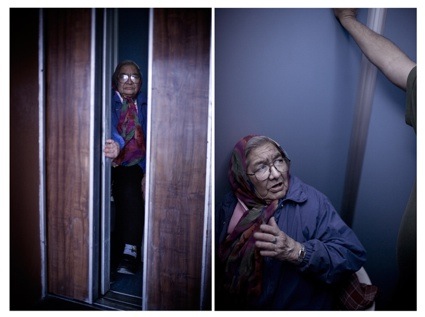 Leonor Castro Reina (78) has been doing the night shift in Building H for 12 years now. During the day she runs a neighbourhood patisserie with her husband. She particularly likes the contact with the residents
Leonor Castro Reina (78) has been doing the night shift in Building H for 12 years now. During the day she runs a neighbourhood patisserie with her husband. She particularly likes the contact with the residents
Kim Badawi‘s photo film follows the The Gaza Stripper. Her name is Ari Lauren Souad Said. Born of an Israeli mother and a Palestinian father, she spent much of her childhood torn between two conflicting faiths and cultures in Israel. In her teens she was sent to live with her grandparents in Texas where she lives today with her four year old daughter, Avigail-Jerusalem Said.
Mom by day, and topless dancer by night, the “Gaza Stripper ” as she is known, is her stage name. Once a practicing Jew she now identifies more closely with Islam. Her tattoos act as a witness and corporal stigmata of her clash of identities.
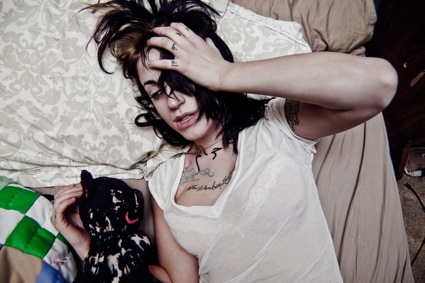 Kim Badawi, The Gaza Stripper
Kim Badawi, The Gaza Stripper
Kim Badawi, The Gaza Stripper
Dionysis Kouris visited the undocumented migrants living in the rumbles of Columbia in Athens. Columbia, established in 1930, was the first record company to operate in Greece. It was also the preeminent record company of the country until it closed down in 1991.
Most of the migrants are Algerians. Nearly all of them want to leave for any of “the big and rich European countries, because in Greece there is not enough work”.
Transit in Columbia, Athens
Bruno Quinquet has spent the past few years tracking down male Japanese office workers in the streets, in public transport, in bars and other public spaces. The men are framed and portrayed. Yet, they are never recognizable.
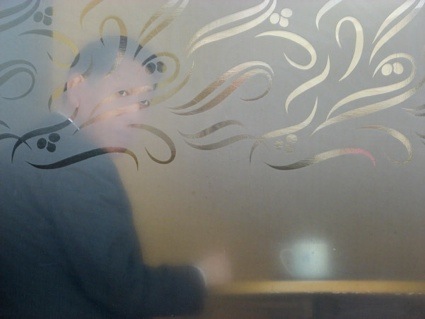 Bruno Quinquet, Salaryman Project
Bruno Quinquet, Salaryman Project
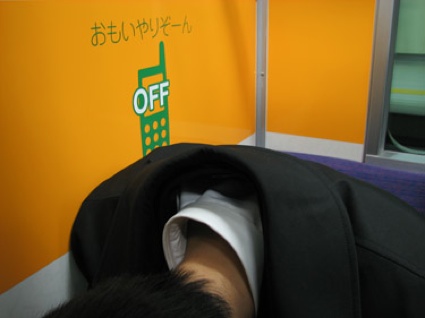 Bruno Quinquet, Salaryman Project
Bruno Quinquet, Salaryman Project
Raphaël Dallaporta‘s photos of houses and apartment blocks in and around Paris are as dry and unassuming as possible. Each image is accompanied by a text written by Ondine Millot. The short stories tell the horrific stories of non-documented immigrants and naive young women whose visa is confiscated by people eager to get domestic help at the lowest possible cost. The young women are beaten, humiliated, underfed. What makes the stories of the Domestic Slavery series all the more heartbreaking is that they took place here and now, that the perpetrators of the crime might not only be our neighbors but that most of them get away with it after having been ordered by the court to pay a pitiful fine.
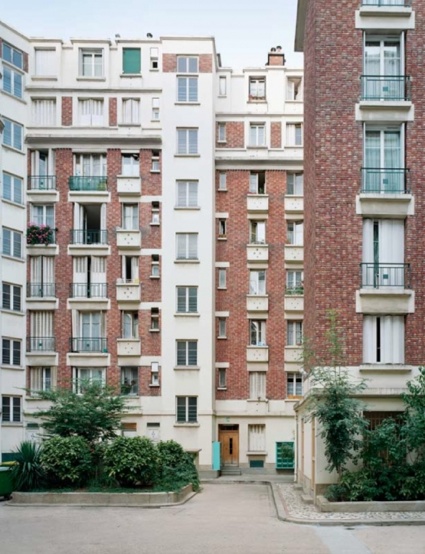 Aaron Hobson‘s Cinemascapes: Google Street View Edition are stitched panoramic gathered from 10 months of traveling via Google Street View in search of enchanting and remote lands.
Aaron Hobson‘s Cinemascapes: Google Street View Edition are stitched panoramic gathered from 10 months of traveling via Google Street View in search of enchanting and remote lands.
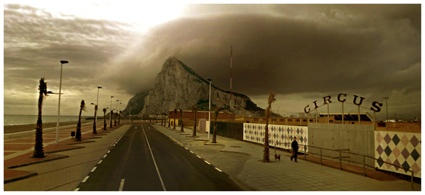 Aaron Hobson, La Linea de la Concepcion, Spain
Aaron Hobson, La Linea de la Concepcion, Spain
Sofie Olsen‘s I am Light, The Art Ranger portrays the daily existence of Ingar Aasen, an artist who calls himself The Art Ranger.
For the past twenty years, Ingar Aasen has lived on a communal area called Øra, Norway, in between a sanctuary for migrant birds, large industries and a garbage-recycling factory. Ingar’s belief in freedom has excluded him from participating in society in any ordinary way. He lives off-the-grid, on communal property, in old Russian army trucks. (…) Three years ago, Ingar invited some selected Rome Gypsy families to get off the streets in Fredrikstad and come to live with him in his camp. They had migrated to Norway to beg and collect usable garbage to bring back to their families in Romania. Unfortunately, various incidences attracted negative attention from the media, and the governing conservative party has demanded that Ingar depart the area. The Roma Gypsies now live back on the streets, while Ingar is mobilizing his camp, building a caravan with all his trucks, which is slowly transforming to a massive art installation, manifesting his internal frustration and desire for freedom.
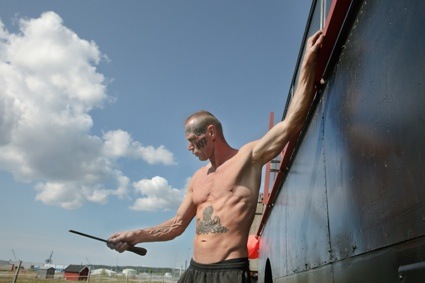
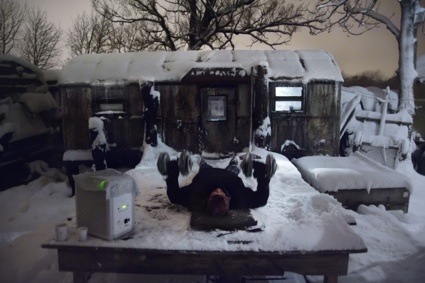
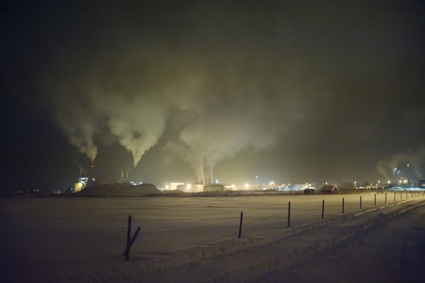
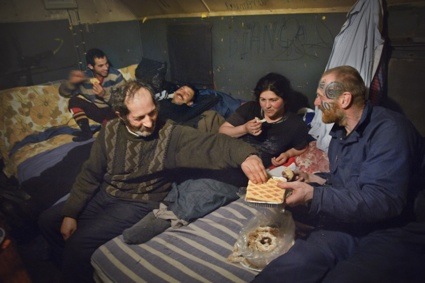
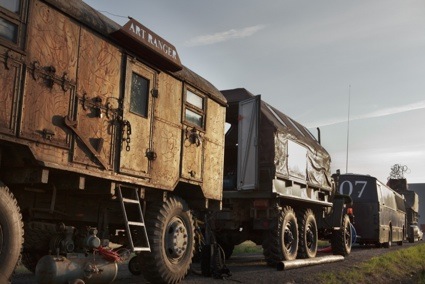
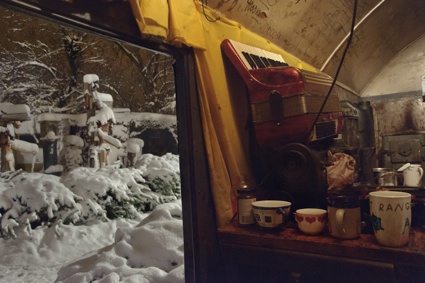 Sofie Olsen, I Am Light, The Art Ranger
Sofie Olsen, I Am Light, The Art Ranger
The London Festival of Photography takes place in various venues all over the city (but mostly around King’s Cross St Pancras) throughout the month. The exhibitions Behind Closed Doors and Inside Out: Reflections on the Public and the Private remain open until 30 June 2012 at the Fitzrovia Community Centre.
